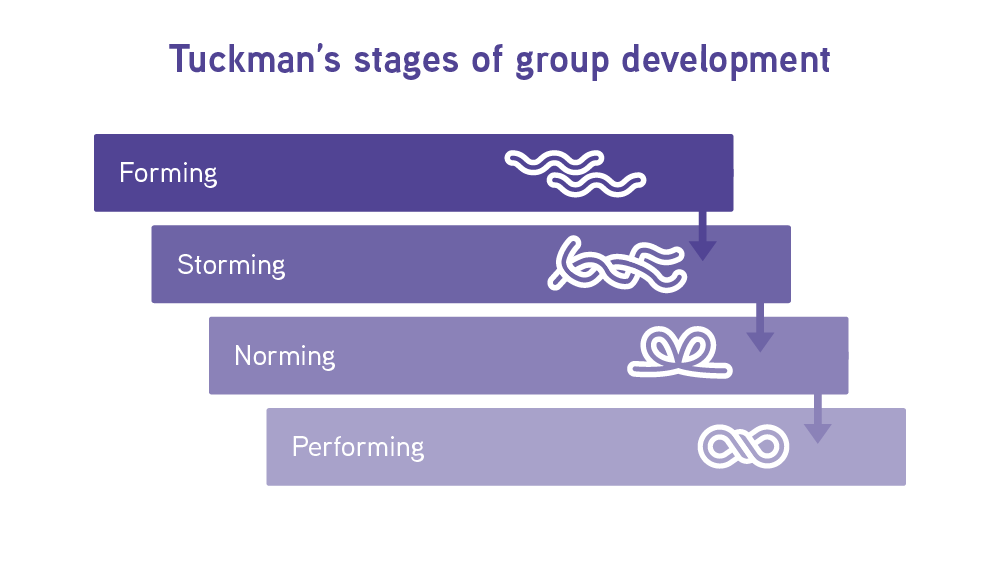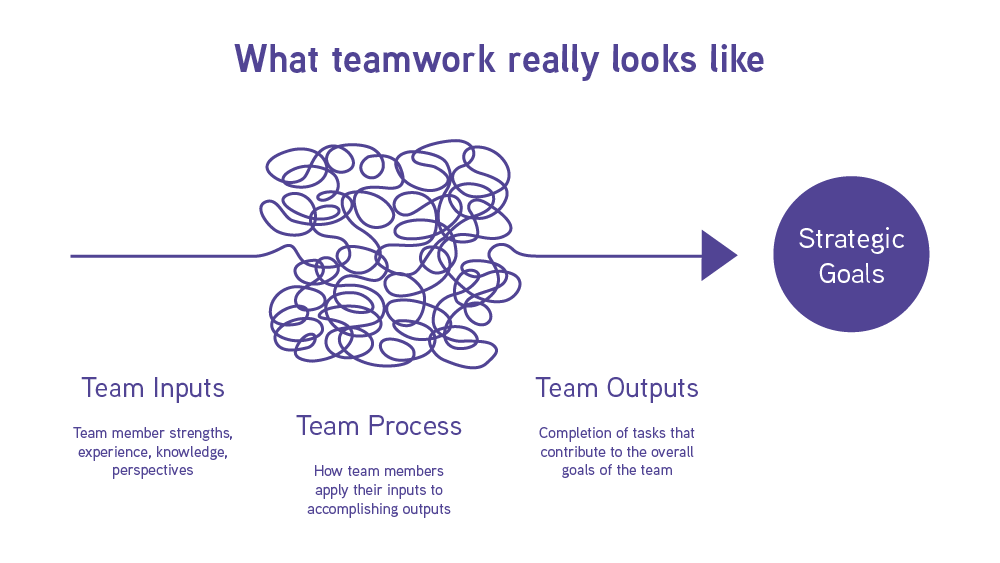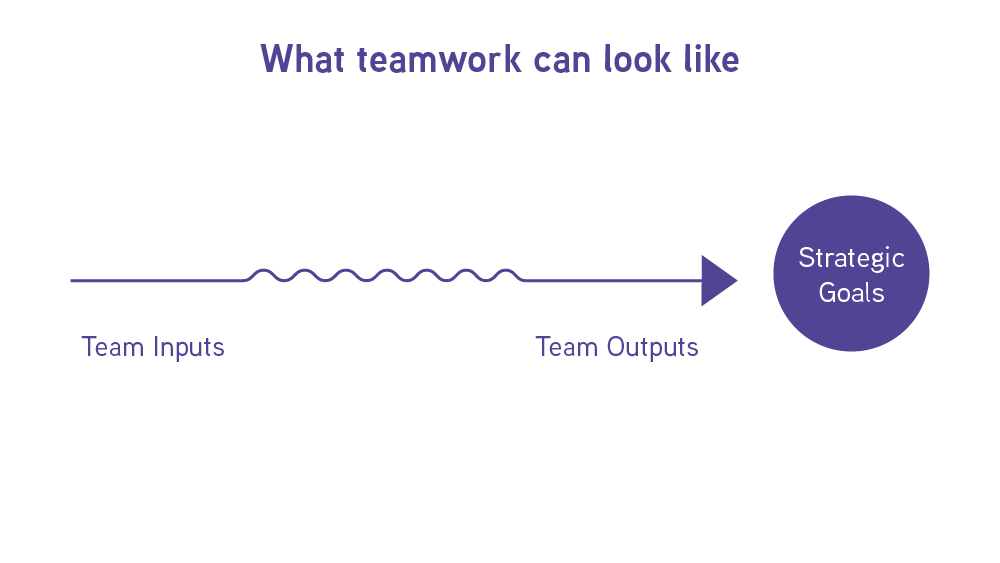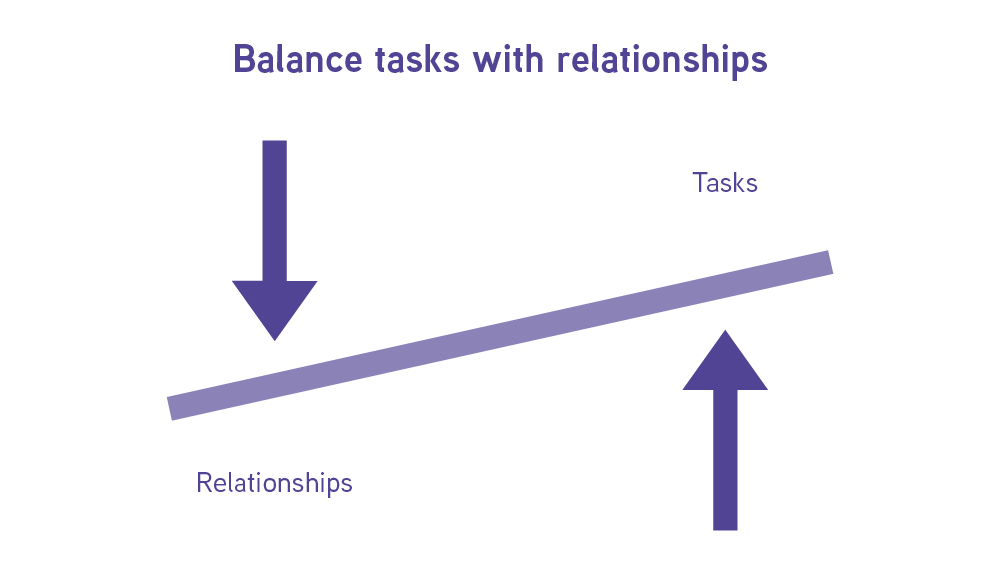Team Development | Training and Development for Employees
Rebuilding connection and rapport in a meaningful way takes pressure off the team unit and places focus on the business strategy. Helping individuals and teams become as powerful as humanly possible.
Developing Balanced Teams
Program overview:
- Shared ‘learning by doing’ workshops both in-person and virtual
- The Four stages of group development – from Forming to Performing
- Development of Emotional Intelligence across the team
- Connect team members to increase collaboration using a strengths-based approach
You’ve tried remote video-based teambuilding, but it’s not bringing the team together cohesively. You need your team to collaborate and perform at a high level, now.
We understand. Trying to build a unified team without interconnectedness is frustrating. You think you are communicating clearly and building rapport among the team, but the team isn’t performing at the level you know they can.
Here are three steps to take to move your team from chaos to unity and ultimately become a performing team.
1) Awareness
Team members need to be aware of their own beliefs, perceptions, and assumptions about themselves and their team members. They also need to be aware of how a disorienting situation impacts individuals as it relates to the way they respond. Some team members may have the resources to not be negatively impacted while other team members may feel a strong threat in a challenging situation.
2) Noticing
When team members learn to notice what’s going on with themselves, their team, and in the broader environment, they can develop the ability to discern how to respond. Teams are often focused on completing a task which makes it easy to not notice that a member of the team may be struggling or be distracted with something else that’s going on. Teams that pay attention to what’s going on with each other build an atmosphere of psychological safety, which allows the team members to connect and build rapport.
3) Influencing
Communication is about giving information that influences someone else to act; but information by itself is not enough to move team members towards their objectives. The information must be accompanied by clear direction. Understanding nonverbal communication is an important part of influencing others to take action towards a commonstrategic goal.
Key Learnings
Awareness of What’s Working and Not Working with the Team
In order to work more effectively with each other, team members first need to gain awareness of their own communication style, conflict management style,…
and interpretations of others’ behavior. Once team members become self-aware, they can begin to make changes to achieve the outcomes they want. Research indicates that “performance feedback is central to self-regulatory processes and team performance” (Driskell, J., Salas, E., Driskell, T. (2018). Foundations of Teamwork and Collaboration.)
Experiential learning with our team of horses provides an opportunity for team members to receive immediate, non-judgmental performance feedback that opens the door to important conversations. Teams can then incorporate that feedback to identify actions to improve performance.
Leveraging Perspectives and Strengths
Disagreements, differences of perspective, and personality preferences are the most common causes of conflict among teams. This conflict is…
also the primary contributor to reducing team productivity.
Whether team conflict is task-based, relationship-based, or process-based, team members need to develop the ability to resolve conflict in a constructive manner so that relationships are preserved, and productivity isn’t negatively impacted. Understanding strengths of team members can substantially reduce conflict and help teams perform at a higher level because research shows using strengths increases engagement (Gallup).
Through goal-based exercises with the horses, team members have the opportunity to experience conflict in an environment that is conducive to healthy conversations about how to appreciate and respect differences and find ways to leverage those differences to achieve team outputs.
Communicating for Results
Communication among team members is further challenged now that more people are working remotely. Effective communication is one of…
the most important behaviors of a high performing team.
Team members with strong communication capabilities share information in a timely manner and are comfortable giving and receiving feedback to reduce ambiguity and miscommunication.
Participation in exercises with our equine facilitators provides teams with the opportunity to develop the ability to improve both verbal and non-verbal communication skills, which can greatly increase productivity and reduce conflict. Team members also learn how to effectively give and receive feedback that contributes to creating a high performing team.
Collaboration is More Than Just a Buzz Word
High performing teams naturally work collaboratively to achieve shared goals. Teams that are stuck in storming have difficulty working collaboratively…
because they are stuck in conflict.
In order for teams to move out of the chaos of storming and begin working more collaboratively, they need to experience what it means to truly work together to achieve a common goal.
Experiential learning with our equine facilitators creates profound opportunities for teams to practice working collaboratively and gain awareness of the challenges that may be preventing them from doing so in their work environment. Participants gain an understanding of how balanced strengths on a team contributes to being a high performing team.
Creating Connection for Performance
Just because a group of people works together doesn’t mean they have a sense of connectedness that moves them forward…
together. High performing teams understand that there is an interdependence among team members that is critical to accomplishing team outcomes.
Team members need to trust each other and know that everyone is valued for the strengths they bring to the group. The best way to create authentic connection among a team, and move them out of storming, is to provide experiences that are psychologically safe while also challenging.
Our team development workshops with the horses provide teams with the opportunity to work collaboratively to achieve goals in an environment of uncertainty – something that directly translates to their daily work. When a team realizes what they are capable of achieving together with the horses, that experience stays with them long after they leave the arena.
Awareness of What’s Working and Not Working with the Team
In order to work more effectively with each other, team members first need to gain awareness of their own communication style, conflict management style,…
and interpretations of others’ behavior. Once team members become self-aware, they can begin to make changes to achieve the outcomes they want. Research indicates that “performance feedback is central to self-regulatory processes and team performance” (Driskell, J., Salas, E., Driskell, T. (2018). Foundations of Teamwork and Collaboration.)
Experiential learning with our team of horses provides an opportunity for team members to receive immediate, non-judgmental performance feedback that opens the door to important conversations. Teams can then incorporate that feedback to identify actions to improve performance.
Leveraging Perspectives and Strengths
Disagreements, differences of perspective, and personality preferences are the most common causes of conflict among teams. This conflict is…
also the primary contributor to reducing team productivity.
Whether team conflict is task-based, relationship-based, or process-based, team members need to develop the ability to resolve conflict in a constructive manner so that relationships are preserved, and productivity isn’t negatively impacted. Understanding strengths of team members can substantially reduce conflict and help teams perform at a higher level because research shows using strengths increases engagement (Gallup).
Through goal-based exercises with the horses, team members have the opportunity to experience conflict in an environment that is conducive to healthy conversations about how to appreciate and respect differences and find ways to leverage those differences to achieve team outputs.
Communicating for Results
Communication among team members is further challenged now that more people are working remotely. Effective communication is one of…
the most important behaviors of a high performing team.
Team members with strong communication capabilities share information in a timely manner and are comfortable giving and receiving feedback to reduce ambiguity and miscommunication.
Participation in exercises with our equine facilitators provides teams with the opportunity to develop the ability to improve both verbal and non-verbal communication skills, which can greatly increase productivity and reduce conflict. Team members also learn how to effectively give and receive feedback that contributes to creating a high performing team.
Collaboration is More Than Just a Buzz Word
High performing teams naturally work collaboratively to achieve shared goals. Teams that are stuck in storming have difficulty working collaboratively…
because they are stuck in conflict.
In order for teams to move out of the chaos of storming and begin working more collaboratively, they need to experience what it means to truly work together to achieve a common goal.
Experiential learning with our equine facilitators creates profound opportunities for teams to practice working collaboratively and gain awareness of the challenges that may be preventing them from doing so in their work environment. Participants gain an understanding of how balanced strengths on a team contributes to being a high performing team.
Creating Connection for Performance
Just because a group of people works together doesn’t mean they have a sense of connectedness that moves them forward…
together. High performing teams understand that there is an interdependence among team members that is critical to accomplishing team outcomes.
Team members need to trust each other and know that everyone is valued for the strengths they bring to the group. The best way to create authentic connection among a team, and move them out of storming, is to provide experiences that are psychologically safe while also challenging.
Our team development workshops with the horses provide teams with the opportunity to work collaboratively to achieve goals in an environment of uncertainty – something that directly translates to their daily work. When a team realizes what they are capable of achieving together with the horses, that experience stays with them long after they leave the arena.
Team work development, takes pressure off the team unit and places focus on the strategy goals:




“In every activity we did today, no matter how divided as a team we were, everyone came together to accomplish a goal. That was powerful.”
The steps involved:
- Needs based assessment
- Evaluate previous assessments (ie. DiSC, Clifton Strengths, Emotional Intelligence etc.) and incorporate learnings into workshop
- Experiential team development workshops Virtually or In-person
- Follow up report to implement actionable steps
In-person Workshop
Equine assisted team development workshops at designated venue
Virtual Workshop
½ day Clifton Strengths* Workshop – offered via Zoom as scheduled with Client
*Our virtual workshops can be adapted to incorporate other assessments as required.
